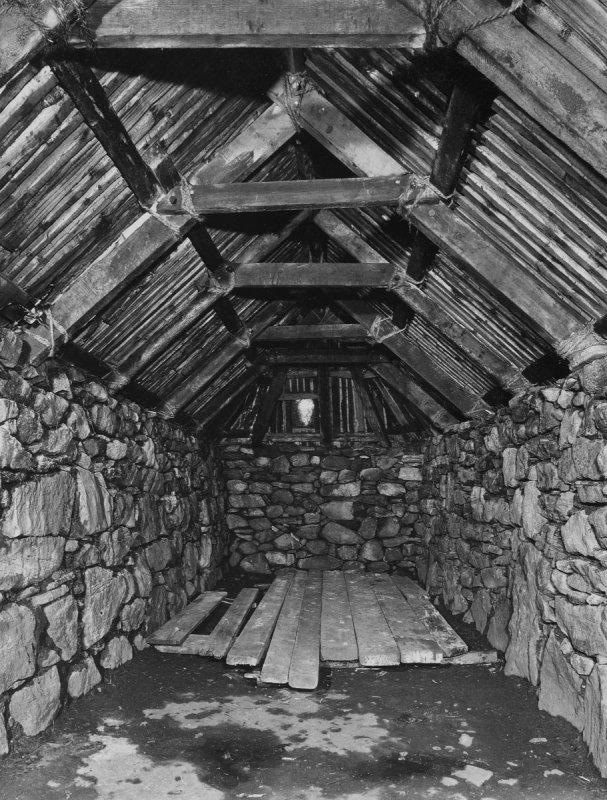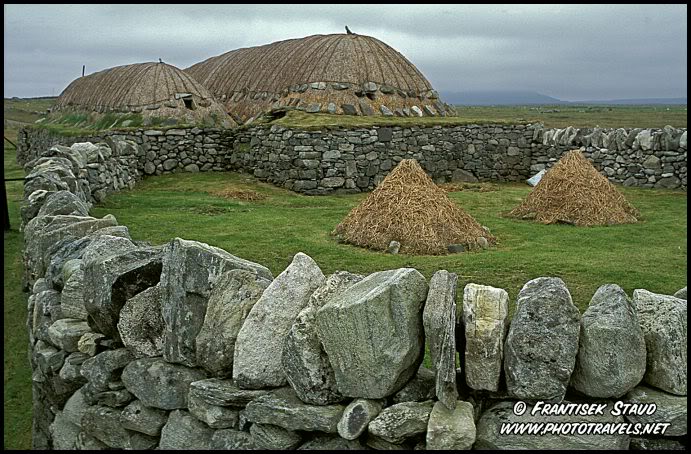Hello
As i have recently read much about ancient estonian hearths/furnaces i have begun to wonder what the house heating systems of other neighbouring countries would have been. In here a rather small log house was used to live in, but for instance how were the scandinavian longhouses heated. The hearths here seem to be dome topped, wihtout a chimney, made of stone without any mortar.
Any good links or references to books are welcome, google ist being very helpful on this topic.
Hi Robert
Th evidence for Scandinavian,Continental and Anglo-Saxon long halls are pretty much similair but not identical in layout, the central hearth appearing to be much as you describe.
I would recommend Stephen Pollington's 'The Mead Hall' for discussions on the construction of the mead hall, and it's social and ritual function.
Also see here for discussion on the Uppakra 'central place'
http://www.uppakra.se/
and for further reading 'Between the Real and the Ideal, Ordering Controlling and utilising space in power negotiations - Hall buildings in Scandinavia, 250-1050 CE'
http://www.lofotr.no/pdf/Rapporter/Lofotr_08....Thesis.pdf
Hope this helps
best
Dave
Th evidence for Scandinavian,Continental and Anglo-Saxon long halls are pretty much similair but not identical in layout, the central hearth appearing to be much as you describe.
I would recommend Stephen Pollington's 'The Mead Hall' for discussions on the construction of the mead hall, and it's social and ritual function.
Also see here for discussion on the Uppakra 'central place'
http://www.uppakra.se/
and for further reading 'Between the Real and the Ideal, Ordering Controlling and utilising space in power negotiations - Hall buildings in Scandinavia, 250-1050 CE'
http://www.lofotr.no/pdf/Rapporter/Lofotr_08....Thesis.pdf
Hope this helps
best
Dave
| David Huggins wrote: |
| Hi Robert
Th evidence for Scandinavian,Continental and Anglo-Saxon long halls are pretty much similair but not identical in layout, the central hearth appearing to be much as you describe. best Dave |
Dave IMO, I agree + Should also take a look @ Viking dwellings in Ireland ( One of the best preserved Viking settlements in Europe has been discovered near the fishing village of Annagassan, in Co Louth.
It dates from 841, the same year Dublin was founded, and is believed to have been the previously unidentified fortress of Linnduchaill -- one of two chosen by the Vikings when they decided to winter in Ireland.
Read more: http://www.belfasttelegraph.co.uk/news/local-...1H5hoMuST)
& Scotland. Although, depending on the locality, the building materials differed, the lay out & heating was the same.
Also not in Scotland & Ireland, similar buildings were still "habituated" until the late 1800s ( including the "fire pit")
Here are some pics of "reconstructions"



BUT All "Viking dwellings" were so "rustic"
A settlement of Picts and Vikings
A tidal island off the north coast of the Orkney mainland, the Brough of Birsay was intensively settled from the 7th to the 13th centuries AD. The physical remains comprise a 9th-century Viking-Age settlement and 12th-century monastery, together with traces of an earlier Pictish settlement of the 7th
Vikings from Norway settled on the brough in the early 9th century. The remains of their houses and barns can still be seen. The settlement developed over the next three centuries, and the process of building and rebuilding has left a complicated maze of walls, one on top of the other, in the area between the later churchyard and the sea. Individual rooms of 10th-century houses are recognisable, together with an 11th-century sauna and part of a house with under-floor heating. Nearby are remains of a smithy.
Then there is JORVIK ( present day York ) http://www.archaeology.co.uk/articles/viking-...ungate.htm
For an early look - http://ads.ahds.ac.uk/catalogue/adsdata/PSAS_...65_324.pdf
SPECIAL NOTE Pg.s 276 ff. & Oven, heating stones,"fireplace"
Jack
As stated before, one central hearth or more would serve to heat a house. There is even some evidence for air vents underneath the hearth itself. I've understood one of the key problems with reconstructed houses is the lack of a system to keep the smoke out. I've worked seasonally in a reconstructed viking longhouse where luckily this was not a problem (partly because of experiments with such a vent system, as well as the interior build of the house. This was also during summer for the most part, so we haven't exactly been freezing to death.
However we have reflected a little bit about heating during winter. We kept at least a small fire going more or less all day to make the room bright enough for tourists to see the interior. I can imagine quite a lot of fuel would be needed for all household needs throughout the year and I find it unlikely that they would keep fires on wood alone. It seems logical that peat must have been used extensively. Otherwise I think in general that being properly dressed for the temperature would play a bigger role in daily life than actually heating a house to a modern standard of comfort.
However we have reflected a little bit about heating during winter. We kept at least a small fire going more or less all day to make the room bright enough for tourists to see the interior. I can imagine quite a lot of fuel would be needed for all household needs throughout the year and I find it unlikely that they would keep fires on wood alone. It seems logical that peat must have been used extensively. Otherwise I think in general that being properly dressed for the temperature would play a bigger role in daily life than actually heating a house to a modern standard of comfort.
Fuel sources would be pretty much dependant on local resources available, IMO peat may not necessarily be available to all central places/long hall locations. No doubt that living in smoky atmospheres led to chronic sinusitis and other respiratory ailments !!
best
Dave
best
Dave
| David Huggins wrote: |
| Fuel sources would be pretty much dependant on local resources available, IMO peat may not necessarily be available to all central places/long hall locations. No doubt that living in smoky atmospheres led to chronic sinusitis and other respiratory ailments !!
best Dave |
According to "some", ( at least in the UK areas that used peat extensively ) the smoke assisted in "weather proofing the "thatched roof.
Jack
| David Huggins wrote: |
| Fuel sources would be pretty much dependant on local resources available, IMO peat may not necessarily be available to all central places/long hall locations. No doubt that living in smoky atmospheres led to chronic sinusitis and other respiratory ailments !!
best Dave |
Definitely. I suppose peat would be a nice alternative where bogs were present, as Norse society used wood in such immense volumes for all sorts of purpose.
I do believe they had ways of keeping the smoke out of the house, and took this into mind in the construction of the houses. Seems this hasn't been taken into account with many reconstructions, where one needs to have a fire going hours in advance before the air is hot enough to properly rise the smoke through the vent. Obviously it would be unacceptable to live under such conditions.
| E. Storesund wrote: | ||
I do believe they had ways of keeping the smoke out of the house, and took this into mind in the construction of the houses. Seems this hasn't been taken into account with many reconstructions, where one needs to have a fire going hours in advance before the air is hot enough to properly rise the smoke through the vent. Obviously it would be unacceptable to live under such conditions. |
3. items to consider -
1. It takes only a short time for the "smoke to "raise"
2.. Perhaps in the initial stage, but the fire was always "lit" there after.
3. This was Prior 2000. ( Smoke filled rooms were a part of "life)
BTW, "encamped" in many "primate "Amer. Indian lodges ( Tepees to "Salisah long houses" that use similar "arrangements" . Smokey to some extent, but a "fact of life."
Jack
Last edited by Jack W. Englund on Mon 21 Mar, 2011 3:24 pm; edited 1 time in total
Viking age long houses generally have long, open fireplaces in the centre of the room. There is no stove or chimney as such, but a opening in the roof where the smoke can get out.
[ Linked Image ]
[ Linked Image ]
| Jack W. Englund wrote: | ||||
3. items to consider - 1. It takes only a short time for the "smoke to "raise" 2.. Perhaps in the initial stage, but the fire was always "lit" there after. 3. This was Prior 2000. ( Smoke filled rooms were a part of "life) BTW, "encamped" in many "primate "Amer. Indian lodges ( Tepees to "Salisah long houses" that use similar "arrangements" . Smokey to some extent, but a "fact of life." Jack |
This I do not deny. I'm just saying that proper thought hasn't always been put into keeping smoke out of the reconstructions, when evidence suggests they probably had means of doing so to some extent without much effort. And it wouldn't always make much sense to keep a fire going, as these (reconstructed as least) houses can sometimes be notoriously hard to heat without some fuel intensity, again being expensive.
I heard a story about the old nazi-financed longhouse of shame (At trelleborg, was it?) with nice and long hearths made for big fires, where the end result was a nice looking hall, though apparently completely useless unless you're hell bent on smoking salmon by the ton.
I'm sure smoke would be a fact of life to some extent, and their lungs probably suffered from it eventually. Even where I worked where careful experimentation had made sure this was not too much of a problem, I came home each day smelling like a cured sausage.
[ Linked Image ]
Here's a picture I ruthlessly snatched, as I could find no others at the moment. Along the width between each pair of the four central pillars of the house they built plank walls (And eventually also rooms in each end of the main hall), as well as an air channel beneath the hearth (there was evidence for this in the original find the house is based on). I'm told they noticed considerable differences in how the smoke cleared at different stages before they completed the interior construction.
Nevermind the ugly inauthentic oil lamps.
thats very intresting, thank you for your replies. :)
Page 1 of 1
You cannot post new topics in this forumYou cannot reply to topics in this forum
You cannot edit your posts in this forum
You cannot delete your posts in this forum
You cannot vote in polls in this forum
You cannot attach files in this forum
You can download files in this forum
All contents © Copyright 2003-2006 myArmoury.com — All rights reserved
Discussion forums powered by phpBB © The phpBB Group
Switch to the Full-featured Version of the forum
Discussion forums powered by phpBB © The phpBB Group
Switch to the Full-featured Version of the forum